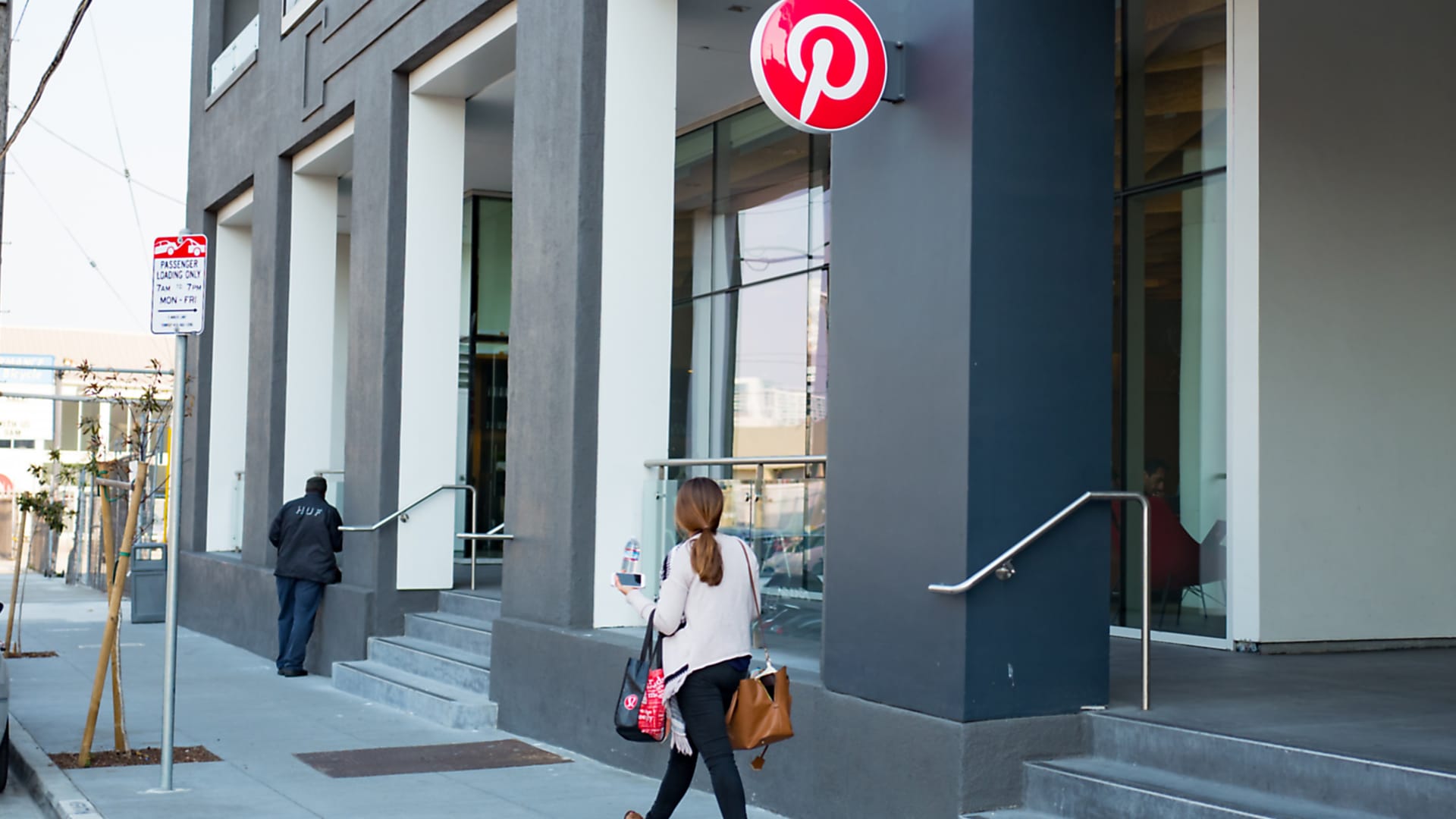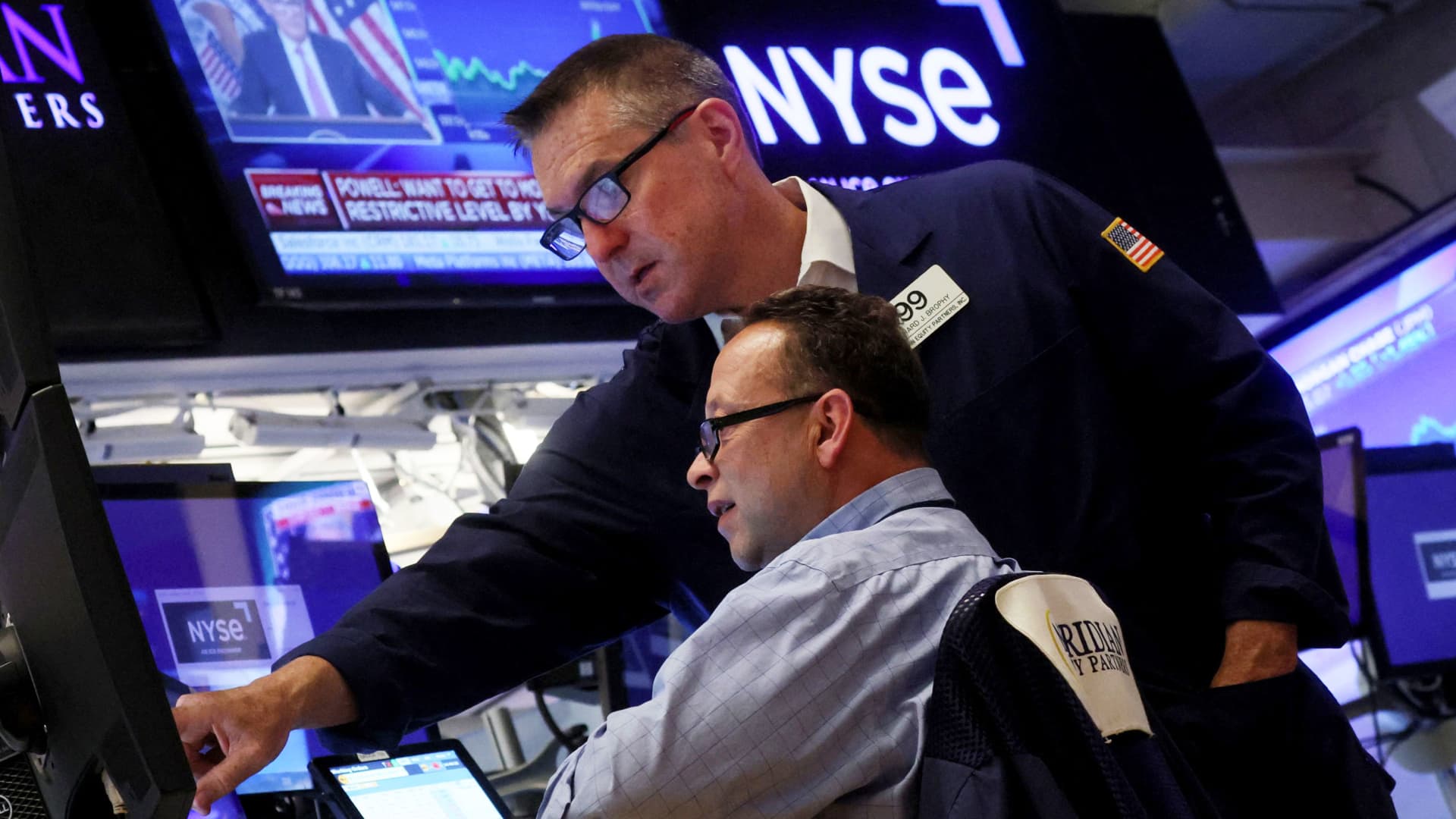Tim Cook, chief executive officer of Apple Inc., speaks during the Apple Worldwide Developers Conference at Apple Park campus in Cupertino, California, US, on Monday, June 6, 2022.
David Paul Morris | Bloomberg | Getty Images
Apple reports earnings on Thursday for the quarter ended in June.
The third quarter of Apple's fiscal year is typically the company's smallest by sales. The quarter is in the back half of the iPhone's annual refresh cycle as investors start to look forward to the release of a new model, which boosts sales starting in late September or October.
This year, analysts and investors will be closely watching Apple's earnings in the face of many new macroeconomic trends, including declining consumer confidence, rising interest rates, and decades-high inflation.
So far, Apple's sales have remained strong, partially because its customers are a fairly well-off group/ But any signs that people are putting off Mac and iPhone purchases because of inflation or recession fears could have implications for the whole economy.
Apple also has significant exposure to China, both as a market to sell its products and as the country where most of its products are assembled. Several Apple factories in China had production shifted or suspended at times during the June quarter because of Covid lockdowns.
Analysts polled by FactSet expect Apple to report $82.8 billion in sales, which would be under 2% growth from the same quarter last year and the slowest growth quarter since the start of the pandemic.
Analysts are also expecting $1.16 in earnings per share, which would be a 10.7% decline on an annual basis. Gross margin will also decline from 43.7% last quarter — high for Apple historically — to between 42% and 43%, the company said in April.
Supply issues and China lockdowns
In April, the story for Apple wasn't about demand: it was about supply. "Right now, our main focus, frankly speaking, is on the supply side," Apple CEO Tim Cook told analysts.
Apple warned of a $4 billion to $8 billion revenue hit stemming from supply issues, including chip shortages and production snags. Some analysts say that Apple will signal that it managed the supply chain well and the revenue hit will end up on the low-end of Apple's guide.
"We believe the company has managed its supply chain better than it planned a quarter ago, while it continued to gain share in an otherwise difficult quarter for smartphones and PCs," Deutsche Bank analyst Sidney Ho wrote in a recent note.
That could be good for iPad sales, which have taken a hit in the past few quarters as Apple prioritized parts for iPhones and other products.
"We also anticipate improving iPad sales in part due to improving supply and believe Apple's $4 billion to $8 billion supply headwind commentary for the June quarter was more likely at the lower-end of this range," Canaccord Genuity analyst T. Michael Walkley wrote in a note this month.
Apple has grappled with shutdowns in urban China, including in Shanghai. Covid restrictions could have hurt Apple's iPhone sales in China early in the quarter, but could have charged sales in June as people left lockdown ready to spend.
Analysts polled by FactSet predict that Apple's Greater China sales will be around $13.79 billion, which would be a decline from the $14.56 billion in sales from a year ago.
September quarter demand
Investors will also be listening closely to see if Apple is signaling consumer weakness in any regions around the world.
"We believe outlook/demand commentary will be the key focus as we try to gauge the impact to Apple's earnings in the event of a slowing consumer/macro environment," Wells Fargo analyst Aaron Rakers said in a note.
Smartphone and PC sales have been slowing, but Apple has been less affected because the high-end market, where it sells, has been more resilient. TSMC, Apple's main supplier of processors, warned demand for PCs, smartphones, and consumer electronics is trending weaker.
If Apple signals that demand is slowing, it would be another signal of a potential recession.
Goldman Sachs' Rod Hall believes "high end demand may be beginning to weaken in Europe driven by high inflation and falling consumer confidence."
Apple has not announced a slowdown in hiring or other cost controls, unlike Alphabet, Tesla, Microsoft, and Meta. But Apple is quietly slowing its pace of hiring, according to Bloomberg News, and some analysts believe that company management could talk about its strategy to control expenses.
Apple hasn't provided guidance since the start of the pandemic, citing uncertainty, and some expect this trend to continue.
"While we don't expect Apple to guide F4Q22, the company is likely to provide qualitative commentary as it has done for several quarters," Rakers wrote.
Can Apple remain a safe haven?
Overall, analysts are still confident in Apple as an efficient company with a strong cash balance, loyal customers, and competitive products.
But can Apple remain a safe haven as other tech stocks drop and the markets recede? Apple is down nearly 15% so far in 2022, but that's better than the Nasdaq, which is down 18%.
"Apple remains a best of breed consumer electronics company able to invest through cycles, and with 60%+ of revenue more staples-like in nature, strong brand loyalty, and continued product/services innovation, we believe it is better insulated relative to peers during a downturn," Morgan Stanley's Huberty wrote.
One key for Apple investors in a downturn will be the growth of its services businesses, which makes overall hardware sales growth less crucial. Apple services, which include monthly subscriptions, payment fees, warranties, search licensing fees from Google, and revenue from the iPhone App Store, also offer higher margins than its core hardware business.
Apple's services business is predicted to be up 12% on an annual basis, according to analysts surveyed by FactSet.
That's a slower growth rate than the 17% annualized growth it posted in its second quarter, and a significant decline from the 27% growth Apple posted in its services business in 2021.
JP Morgan's Samik Chatterjee believes that Apple's plan to buy back shares will buoy the stock, even if its earnings underwhelm. Apple's board authorized $90 billion in additional share buybacks and dividends in April.
"We believe the resilience of the earnings estimates in the backdrop of macro deterioration, including both inflation and adverse FX, will continue to drive investors to prefer Apple with strong cash generation and balance sheet that will allow it to offset any earnings dilution on account of the macro through buybacks," Chatterjee wrote in a note.






